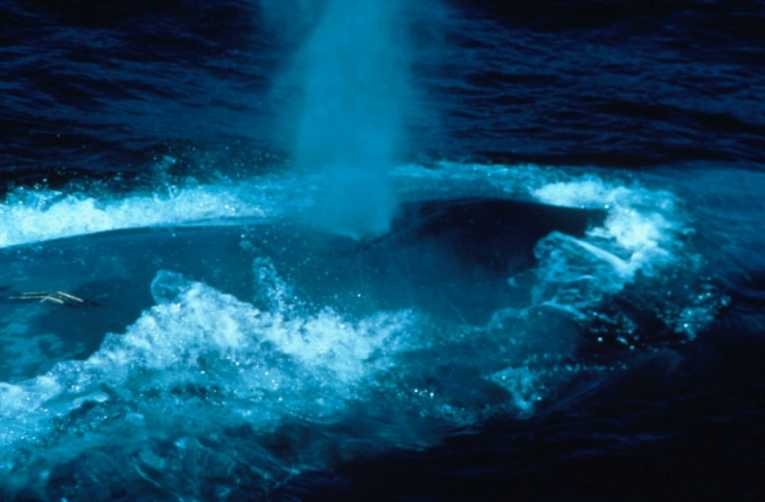Scientists working in the Gulf of California have found whales exhibiting the type of sun damage typically associated with sunburn in humans. The study, published this week in the Proceedings of the Royal Society B., also found that this sun damage is worsening over time.
The research group, involving scientists from the Zoological Society of London (ZSL), Queen Mary, University of London and Mexico's Interdisciplinary Marine Science Center (CICIMAR) have been studying blue whales, fin whales and sperm whales in the Gulf of California over three years.
The Gulf of California is UNESCO World Heritage Site and hosts one third of the world's marine mammal species. It has been dubbed by the WWF "the world's aquarium".
Marine biologists have observed blisters on the skin of whales for a number of years. Recent advances in photography have allowed scientists to take high-quality pictures of the lesions to track their severity.
They were also able to obtain skin samples to analyse the type of damage that was occurring. It appears that the damage is consistent with the that typically associated with sunburn in humans. Worryingly, the extent of the skin damage seemed to worsen during the period of the study.
As in human sunburn the skin damage is caused by ultraviolet radiation (UVR). The UV index (an international standard measurement of the strength of UVR from the sun) in the Gulf of California remain high or extremely high throughout the year. In recent years the level of UVR in the Gulf of California has increased.
It's believed that this increase is the result either of depletion of the ozone level or a decrease in cloud cover. It is impossible for whales living in the region to avoid sun exposure.
Laura Martinez-Levasseur from ZSL and Queen Mary, who is the study's lead author explained: "Whales need to come to the surface to breathe air, to socialise and to feed their young, meaning that they are frequently exposed to the full force of the sun."
Professor Edel O'Toole, of Queen Mary noted: "As we would expect to see in humans, the whale species that spent more 'time in the sun' suffered greater sun damage."
Another factor that seems to determine the severity of sun damage across the three species is their skin tone. It appears that as in humans and other land mammals the degree of skin pigmentation affects the severity of damage from UVR. In the Gulf of California the darker fin whales had less sun damage than the paler-skinned blue whales.
Researchers now hope to discover more about the consequences of this sun damage by looking at the expression of genes involved in skin pigmentation and how the DNA damage repair works in whales. In humans however it's known that skin damage caused by UVR can ultimately lead to cancer developing.










